Books
Books

Stop Being Straight - Edition
T-shirt edition by Anouchka Oler Nussbaum (aka Drama More) as seen in their exhibition and performance series Des Fins, Des Mondes (2022) at Kantine in Brussels, among many other spaces. Inspired by Paris Hilton, this t-shirt is a great conversation starter for an heteronormative-free world and everything that follows.
Edition of 50
More about Des Fins, Des Mondes:
http://www.kantine.space/anouchka-oler/

Die, My Love
In a forgotten patch of French countryside, a woman is battling her demons embracing exclusion yet wanting to belong, craving freedom whilst feeling trapped, yearning for family life but at the same time wanting to burn the entire house down. Given surprising leeway by her family for her increasingly erratic behaviour, she nevertheless feels ever more stifled and repressed. Motherhood, womanhood, the banality of love, the terrors of desire, the inexplicable brutality of another person carrying your heart forever Die, My Love faces all this with a raw intensity. It s not a question of if a breaking point will be reached, but rather when and how violent a form will it take?
A manic, bruising stream of conscious portrayal of a mother and wife struggling to maintain both a normal life and her sanity.
Compared to Nathalie Sarraute and Virginia Woolf, Ariana Harwicz is one of the most radical figures in contemporary Argentinian literature. Her prose is characterised by its violence, eroticism, irony and criticism of the clichés surrounding the notions of the family and conventional relationships. Born in Buenos Aires in 1977, Harwicz studied screenwriting and drama in Argentina, and earned a degree in Performing Arts from the University of Paris VII as well as a Master's in comparative literature from the Sorbonne. She has taught screenwriting and written plays, which have been staged in Buenos Aires. Feebleminded (which has also been adapted for the stage in Argentina and Spain) is her second novel and a sequel in an 'involuntary' trilogy, preceded by Die, My Love (Charco Press, 2017) and followed by Precocious. Her fourth novel, Degenerate comes out in June 2019. Die, My Love was longlisted for the Man Booker International Prize (2018) and shortlisted for the Republic of Consciousness Prize (2018). It has been translated into more than ten languages.
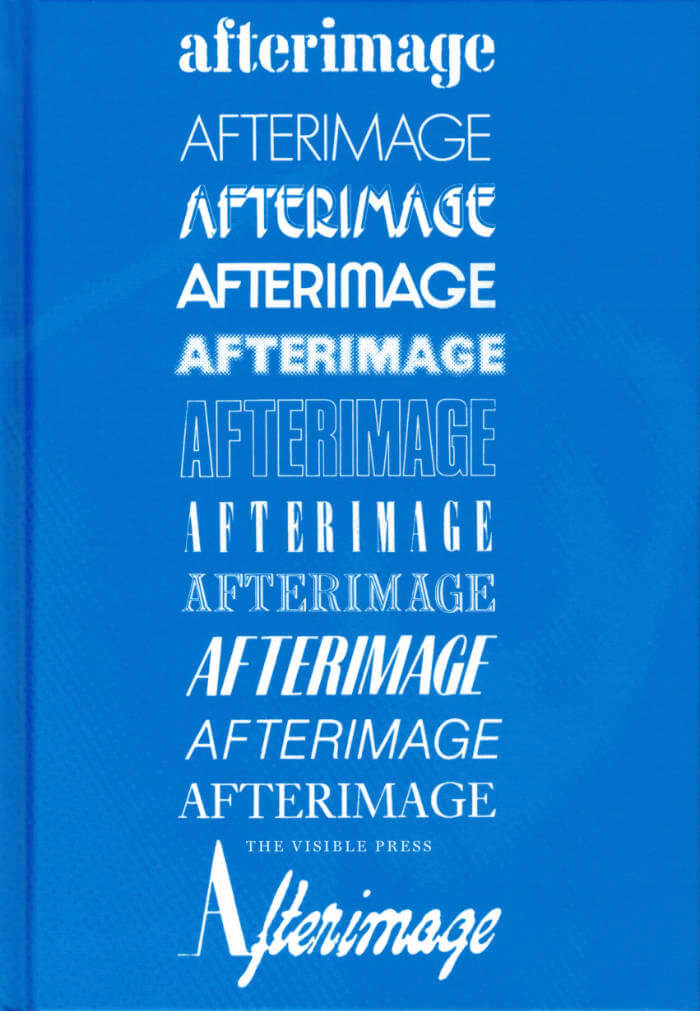
The Afterimage Reader
The independent British film journal Afterimage published thirteen issues between 1970 and 1987. International in scope, it surveyed the many forms of radical cinema during an extraordinary period of film history.
Having emerged in the wake of post-1968 cultural and political change, Afterimage charted contemporary developments with special issues on themes such as the avant-garde, Latin American cinema and visionary animation, and also looked back at early film pioneers. It published many of the leading critics of the period and vitally provided a forum for filmmakers’ writings and manifestos.
This indispensable collection includes texts by scholars Noël Burch, Roger Cardinal, B. Ruby Rich and Peter Wollen, filmmakers Jean Epstein, Jean-Luc Godard, Derek Jarman and Jan Švankmajer, plus extended interviews with Hollis Frampton and Raúl Ruiz, and more.
The Afterimage Reader is edited by Mark Webber and features new contributions from two of the journal’s editors, Simon Field and Ian Christie.

Telling Invents Told
Telling Invents Told is the first collection of writings by artist and filmmaker Lis Rhodes.
It includes the influential essay Whose History? alongside texts from works such as Light Reading, Pictures on Pink Paper and A Cold Draft, together with new and previously unpublished materials. Since the 1970s, Rhodes has been making radical and experimental work that challenges hegemonic narratives and the power structures of language. Her writing addresses urgent political issues – from the refugee crisis to workers’ rights, police brutality, racial discrimination and homelessness – as well as film history and theory, from a feminist perspective.
An important figure at the London Film-Makers’ Co-operative, Rhodes was also a founding member of Circles, the first British distributor of film, video and performance by women artists.

Flare Out
Flare Out: Aesthetics 1966–2016 is a collection of essays by Peter Gidal that includes “Theory and Definition of Structural/Materialist Film” and other texts on metaphor, narrative, and against sexual representation.
Also discussed in their specificity are works by Samuel Beckett, Thérèse Oulton, Gerhard Richter and Andy Warhol. Throughout, Gidal’s writing attempts a political aesthetics, polemical as well as theoretical. One of the foremost experimental film-makers in Britain since the late 1960s, Peter Gidal was a central figure at the London Film-Makers’ Co-operative, and taught advanced film theory at the Royal College of Art. His previous books include Andy Warhol: Films and Paintings (1971), Understanding Beckett (1986) and Materialist Film (1989).
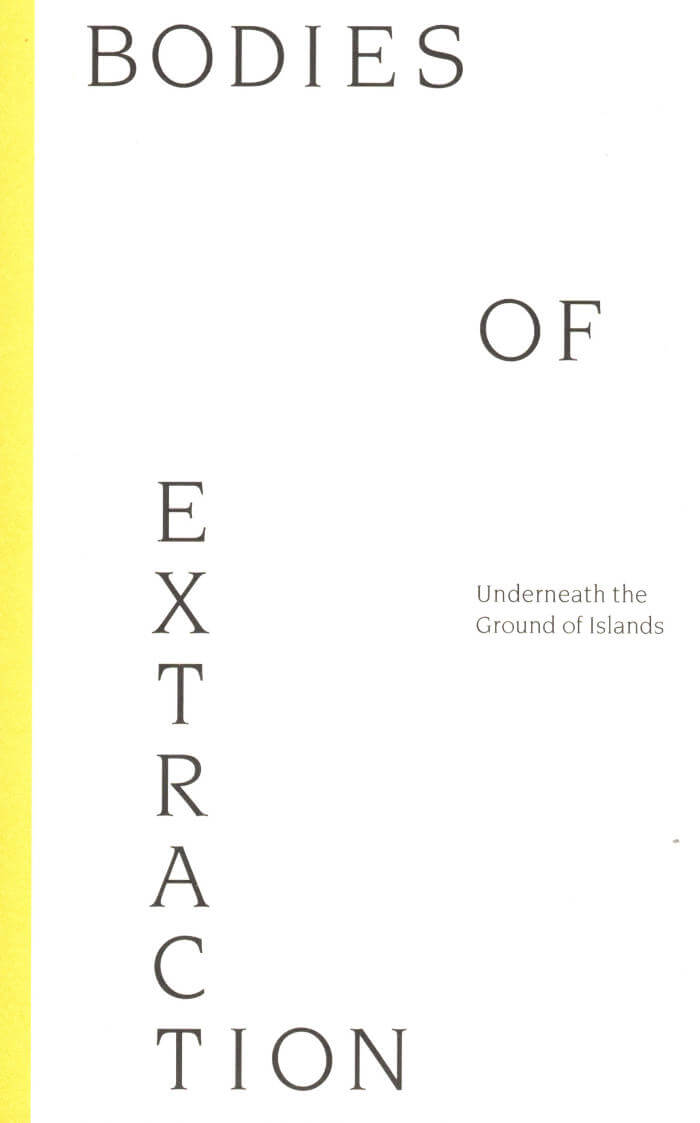
Bodies of Extraction
Lydia Xynogala, Lorena Vicini and 1 more
What does it mean to drill deep and interfere with the configuration of tectonic plates? What does it mean to hollow out and alienate islandic undergrounds? How is wealth extracted and exploited from the ground, crumbled into fragments, transformed into matter, pieces of power, moved away to be represented elsewhere? Whose lungs and souls are capitalized upon and hidden under the suffocating dust in mining shafts? To whom do the surface of the land and its underground belong?
This book takes proto-industrial mining in the Aegean island of Serifos as an entry point for disclosing historical and contemporary consequences of politics of the soil through land extraction, and looks at how mineral evidence was historically produced, disseminated, and capitalized upon in the Aegean region and beyond.
Contents:
Mineral Travels:
Fragments of Geographies on the Move
by Lydia Xynogala
The Evil in the Surface
by Lorena Vicini
Consuming Land at Serifos
by Asli Özdoyuran
and David Bergé
Letter from Frikas Fortress
by Constantinos Speras
Iron Lungs
by Milica Ivic
Walking on Marble: Materialized Histories
by Anna Run Tryggvadottir
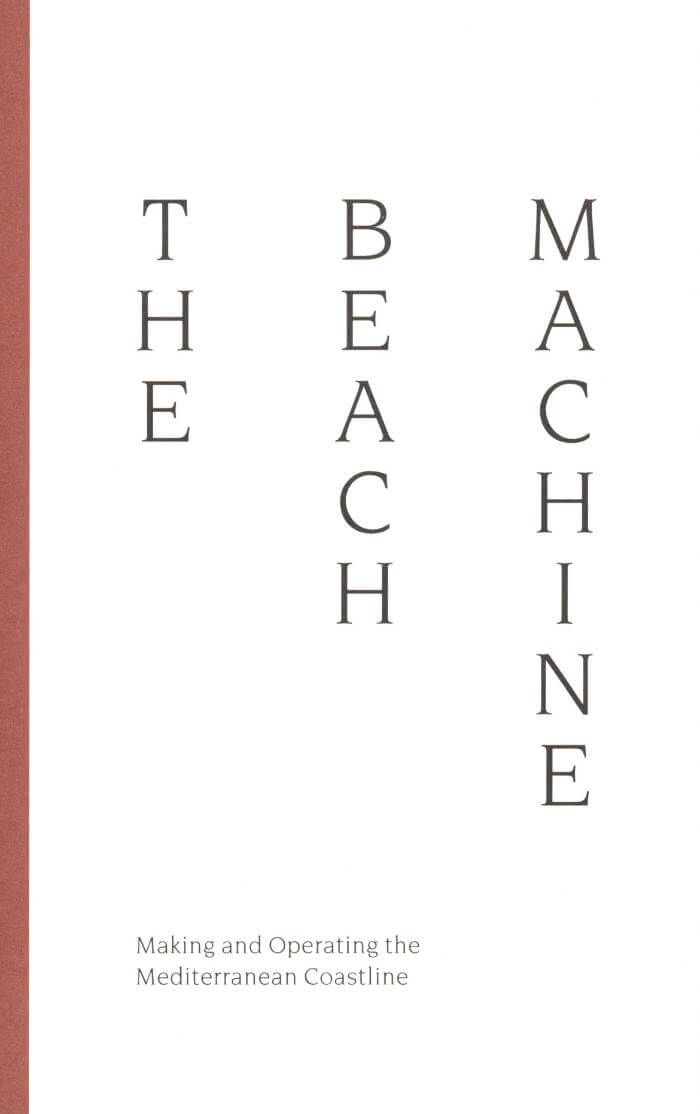
The Beach Machine
Aggressively rebounding after recessions and the pandemic, sprawling landscapes of tourism in the Mediterranean continue to build upon the iconic spatial typology of sea & sun vacationing: the beach. But behind the leisurely scattered bodies and the quiescent summer shores, beachfronts are assembled as intensely ordered infrastructures for the heavy machineries of tourism.
Approaching the beach as an operational socio-technical landscape, this book unpacks stories of construction, programming, and maintenance: from traces of moving sands in Lefkada island to mirror postwar developments in Delos and Mykonos islands, and from historic and bodily excursions to workings of the Athenian riviera to rituals of eco-certification under Blue Flags.
The texts frame the beach as a machine, one with protocols of function and metabolic needs, studying how it directs the capture of land and bodies, while establishing forms of environmental control. As a repeatable and proliferating type of infrastructure space, the beach has the potential to expose parallel evidence of seeming globalizations and patchy planetarities.
Contents:
Flying Flags, Fixing Sands
by George Papam
Moving Sands: Ammoglossa
by Eleni Grapsa
Delos Symposia
and Delos LTD:
Making Global Leisurescapes
by Petros Phokaides
Beach Making:
The Naked Body on the Rocks
by Phevos Kallitsis
Beach Effect
by Hannah Freed-Thall
Hello Hygiene:
A Guide for Bathers
by Lydia Xynogala

Mamma Rassise n°4
Fanzine de poésie à tendance médiévo-queer et son assortiment de goodies: encart BD et planche de stickers.
Avec :
@trobairitz_lactans @guillaumeseyller @matricule.mouche @ricardoakajohan
@sarahkorzec @constanceburgerleenhardt #HaroldBarme @touche_moulin #GraceGrenadine @estelle.coppolani @ninoa.andre @annesarah_huet @selibkide

Kwetsbaarheid — Over raken en geraakt worden
Marlies De Munck en Pascal Gielen
In een competitief bestaan verbergen we onze zwakke plekken. Evaluatiedrift en de voortdurende dwang tot innoveren duwen mensen steeds verder weg in een bolster. Hoe danook gaan we allen als knoeiers door het leven, vindt Marlies De Munck. Ze roept daarom op tot openheid en mededogen. Want dat bolsteren hindert je om te raken. En om geraakt te worden. Pascal Gielen houdt een warm pleidooi voor een esthetische kunde: het vermogen via al onze zintuigen een rammelende en fragiele werkelijkheid toch als een samenhangend geheel te ervaren. Dat is de potentie van kunst en cultuur: om ons te verzoenen met een chaotisch en kwetsbaar leven.
Marlies De Munck is cultuurfilosofe. Ze is als docent verbonden aan het Departement Wijsbegeerte van de Universiteit Antwerpen en aan het KASK & Conservatorium in Gent. Als lid van het Culture Commons Quest Office (CCQO) aan het Antwerp Research Institute For the Arts (ARIA) doet ze onderzoek naar de gezondheid van cultuur.

Art and Solidarity Reader
Solidarity has re-entered the global zeitgeist with resounding force in the last decades and is especially urgent to consider today. Yet this concept – both a potent ideal and a slippery notion – is one of the least analysed within the arts. Why? It is perhaps because colonialism, Neoliberalism, hyper-individualism and Western-centred concepts of art have eroded visions of a care-based society. Creating a fair and vital social fabric inspired by mutual dependencies between living beings and all entities including fauna, flora, air, land and water, is fundamental for our collective existence.
A critical toolbox with intersectional perspectives is needed to examine this minefield and reveal meaningful and inspiring narratives that can guide our future.
Contributors: Reem Abbas, Toufoul Abou-Hodeib, Noor Abuarafeh, Yásnaya Elena Aguilar Gil, Ali Hussein Al-Adawy, Salvador Allende, Beth Brant, Wendy Carrig, Heather Dewey-Hagborg, Emory Douglas, Ntone Edjabe, Ingrid Fadnes, Eva Maria Fjellheim, Katya García-Antón, Soledad García Saavedra, Gavin Jantjes, Shoili Kanungo, Geeta Kapur, Lara Khaldi, Ixchel León, Audre Lorde, Chelsea Manning, Olivier Marboeuf, Barbara Masekela, Naeem Mohaiemen, Mário Pedrosa, Ram Rahman, Laura Raicovich, farid rakun/ruangrupa, Aban Raza, Devika Singh, Irene Soria Guzmán, Kwanele Sosibo, Eszter Szakács, Dulce Celina Ureña Hernández, Alice Walker.
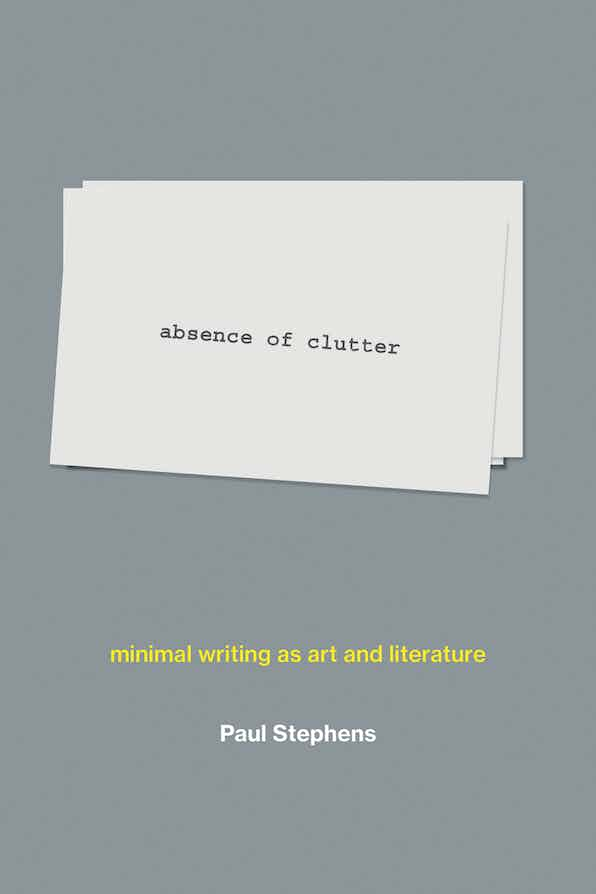
Absence of Clutter: Minimal writing as art and literature
An exploration of minimal writing—texts generally shorter than a sentence—as complex, powerful literary and visual works.
In the 1960s and 70s, minimal and conceptual artists stripped language down to its most basic components: the word and the letter. Barbara Kruger, Jenny Holzer, Carl Andre, Lawrence Weiner, and others built lucrative careers from text-based art. Meanwhile, poets and writers created works of minimal writing—visual texts generally shorter than a sentence. (One poem by Aram Saroyan reads in its entirety: eyeye.) In absence of clutter, Paul Stephens offers the first comprehensive account of minimal writing, arguing that it is equal in complexity and power to better-known, more commercial text-based art.
Minimal writing, Stephens writes, can be beguilingly simple on the surface, but can also offer iterative reading experiences on multiple levels, from the fleeting to the ponderous. “absence of clutter,” for example, the entire text of a poem by Robert Grenier, is both expressive and self-descriptive. Stephens first sets out a theoretical framework for reading and viewing minimal writing and then offers close readings of works of minimal writing by Saroyan, Grenier, Norman Pritchard, Natalie Czech, and others. He “reverse engineers” recent works by Jen Bervin, Craig Dworkin, and Christian Bök that draw on molecular biology, and explores print-on-demand books by Holly Melgard, code poetry by Nick Montfort, Twitter-based work by Allison Parrish, and the use of Instagram by Hans-Ulrich Obrist and Saroyan. Text, it seems, is becoming ever more prevalent in visual art; meanwhile, poems are getting shorter. When reading has become scanning a screen and writing tapping out a text, absence of clutter invites us to reflect on how we read, see, and pay attention.

Textes à lire à voix haute
A collection of texts by fifteen contemporary Brazilian authors who approach the notions of care and privilege from a transfeminist, anti-racist and decolonialcritical perspective.
Edited by Diane Lima, Cíntia Guedes, abigail Campos Leal.
Texts by Ricardo Aleixo, Pacha Ana, Castiel Vitorino Brasileiro, Monna Brutal, Rebeca Carapiá, Pêdra Costa, Ingrid Martins, muSa Michelle Mattiuzzi, Jota Mombaça, tatiana nascimento, Elton Panamby, Grace Passô, Miro Spinelli, Preto Téo, Lucas Veiga.
Translated from the Portuguese (Brasil) by Luana Almeida, Valentina D'Avenia, Léa Meier, aurore/a zachayus.

Or, on Being the Other Woman
Throughout this book-length poem, Simone White considers the dynamics of contemporary black feminist life, attesting to the narrative complexities of writing and living as a black woman and artist.
In Or, on being the other woman, Simone White considers the dynamics of contemporary black feminist life. Throughout this book-length poem, White writes through a hybrid of poetry, essay, personal narrative, and critical theory, attesting to the narrative complexities of writing and living as a black woman and artist. She considers black social life—from art and motherhood to trap music and love—as unspeakably troubling and reflects on the degree to which it strands and punishes black women. She also explores what constitutes sexual freedom and the rewards and dangers that come with it. White meditates on trap music and the ways artists such as Future and Meek Mill and the sonic waves of the drum machine convey desire and the black experience. Charting the pressures of ordinary black womanhood, White pushes the limits of language, showing how those limits can be the basis for new modes of expression.
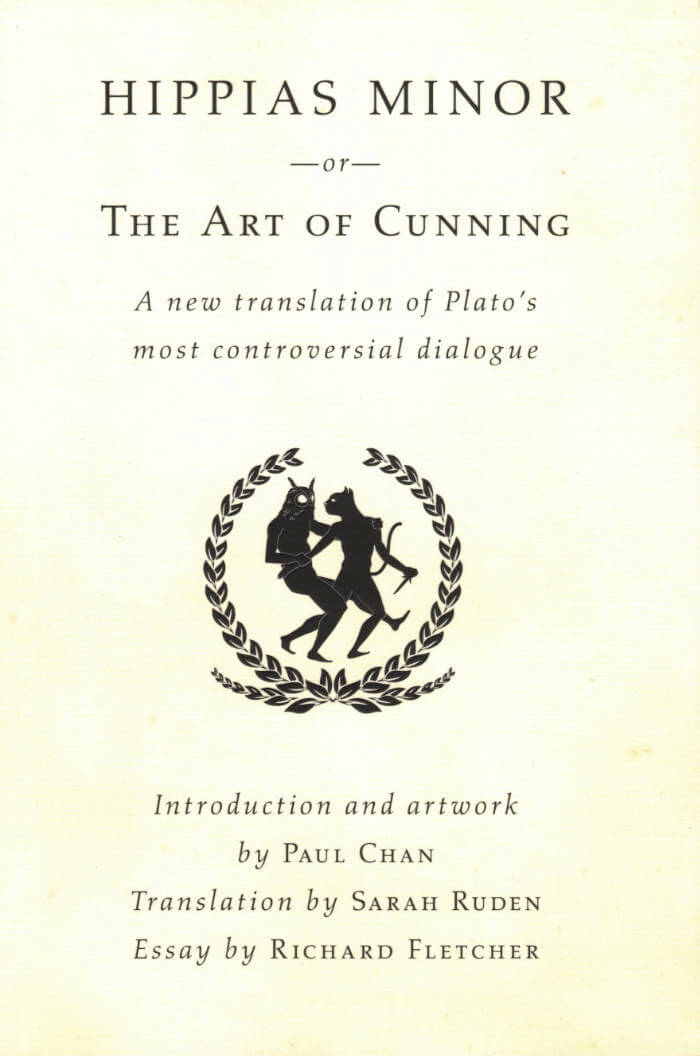
Hippias Minor or the Art of Cunning: A New Translation of Plato's Most Controversial Dialogue
One of Plato's most controversial dialogues, Hippias Minor details Socrates' claims that there is no difference between a person who tells the truth and one who lies, and that the good man is the one who willingly makes mistakes and does wrong. But what if Socrates wasn't merely championing the act of lying—as the dialogue has been traditionally interpreted—but, rather, advocating the power of the creative act?
In this new translation by Sarah Ruden, Hippias Minor is rendered anew as a provocative dialogue about how art is a form of wrongdoing. The accompanying introduction by artist Paul Chan and essay by classicist Richard Fletcher argue that an understanding of the dialogue makes life more ethical by paradoxically teaching one to be more cunning.

The Lesbian Avenger Handbook
Launched in New York City, in 1992, the Lesbian Avengers rejected the picket line and ordinary demo for media-savvy, nonviolent direct action.
They were superheroes arriving "to make the world safe for baby dykes everywhere;" warriors with capes and shields doing a line dance; dykes "Lusting for Power," pushing a giant bed float down Sixth Avenue in New York (with lesbians on it); nationally-ambitious Avengers eating fire in front of a hostile White House; lovers reuniting a statue of Alice B. Toklas with Gertrude Stein, then waltzing in the snow in Bryant Park. And homos who shamelessly chanted, "Ten percent is not enough, recruit, recruit, recruit."
Originally published in 1993, Homocom edition 2021

Gossiping is Not (Just) Bitching
Gossiping is Not (Just) Bitching is a zine transcribing a performance revolving around the clichés attributed to gossip, addressing the oppression exerted on women and queer voices. Informal discussions, defined as futile, are discredited as marginal, practised by people who don’t always have access to public speech. The performance deconstructs different uses of gossip, exploring its political significance through the interpretation of sources from sociology, literature, chick-flicks and reality TV.
More images at
https://aurianepreudhomme.com/gossiping-is-not-just-bitching-artist-book-2022/

And Then Comes the Chorus
In the high-octane essay And Then Comes the Chorus, Jon Refsdal Moe pursues the imagination of theatre opened up by Alfred Jarry when he slipped an ‘r’ into a profanity as he exclaimed ‘Merdre!’ on stage. ‘What matters is that the words became flesh and that this flesh exploded right in the world’s face. What matters is that literature stood up at the Théâtre de l’Œuvre on December 10, 1896 and cried FUCK! and all hell broke loose and the world has never been the same since.’
Jon Refsdal Moe is a writer and dramaturg from Oslo. He has written two novels, one doctoral dissertation, several essays and a lot of criticism. He was artistic director of Black Box teater in Oslo from 2009 to 2016 and is now professor of dramaturgy at Stockholm University of the Arts.
Published by Varamo Press in the essay series Gestures
First edition November 2022
48 pages, 11.0 x 16.5 cm, sewn perfect binding
ISBN: 978-82-691492-8-9
Graphic design by Michaël Bussaer

Ulysses Jenkins: Without Your Interpretation
The first monograph on the groundbreaking video artist and member of the seminal Video Venice News and Studio Z groups.
This is the first major retrospective on the groundbreaking Los Angeles-based video artist Ulysses Jenkins (born 1946). Since the 1970s, Jenkins has interrogated questions of race and gender as they relate to ritual, history and state power. From his work with Video Venice News, a Los Angeles media collective he founded in the early 1970s, to his involvement with the artists' group Studio Z (alongside figures such as David Hammons, Senga Nengudi and Maren Hassinger), to his video and performance works, Jenkins explores how white supremacy is embedded in popular culture. Beginning as a painter and muralist, Jenkins was introduced to video just as the first consumer cameras were made available, and he quickly seized upon the technology as a means to broadcast critical depictions of multiculturalism. This catalog features an extensive portion of Jenkins' archive, early documentary films, photographs and ephemera, as well as his video art.

Carolee Schneemann: From Then and Beyond
An oral-visual autobiography of Carolee Schneeman, with portraits of her home and working life.
The pioneering artist Carolee Schneemann (1939-2019) embraced a wide range of mediums: from painting to performance, film and video to mixed media and installations, famously applying the gestural physicality of action painting to kinetic environments and performances centered on the body—more often than not, her own. Many of the artist's works have entered the canon of contemporary art, such as Eye Body (1963), Fuses (1964), Meat Joy (1964), Up To and Including Her Limits (1974) and Interior Scroll (1975).
From Then and Beyond consists of interviews with Schneemann conducted by art historian Oliver Kielmayer (Kunsthalle Winterthur) and curator Lara Pan at her home in New Paltz, New York. The transcript of these interviews, edited into 27 monologues and dialogues, is the last substantial testimony by the artist and is complemented by illustrations of her works and photographs of her house.
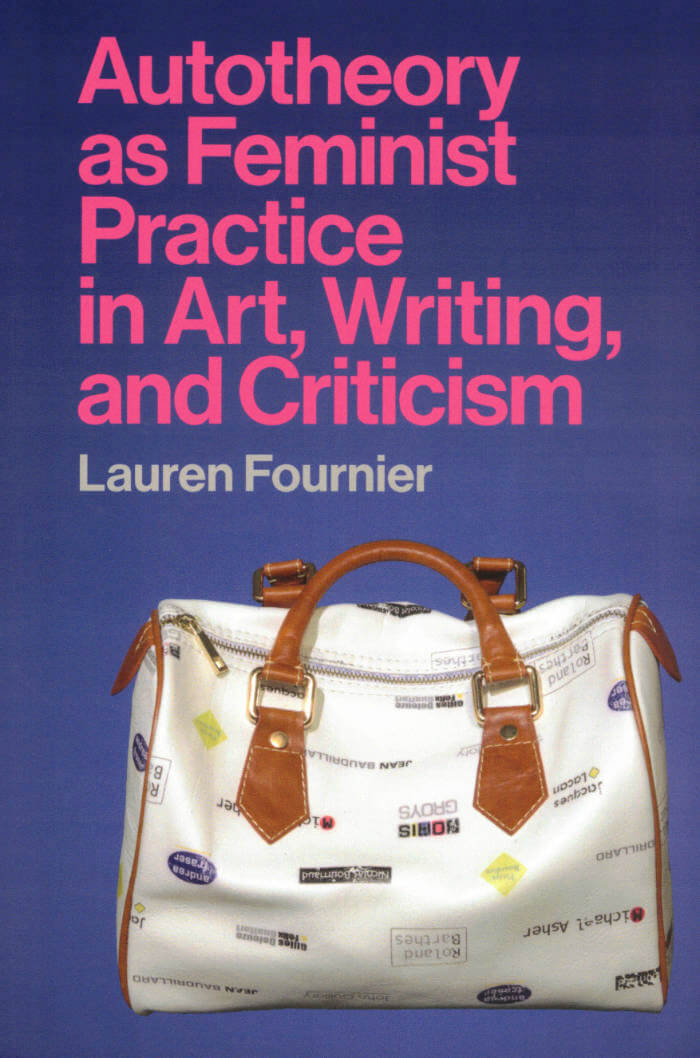
Autotheory as Feminist Practice in Art, Writing, and Criticism
Autotheory—the commingling of theory and philosophy with autobiography—as a mode of critical artistic practice indebted to feminist writing and activism.
In the 2010s, the term “autotheory” began to trend in literary spheres, where it was used to describe books in which memoir and autobiography fused with theory and philosophy. In this book, Lauren Fournier extends the meaning of the term, applying it to other disciplines and practices. Fournier provides a long-awaited account of autotheory, situating it as a mode of contemporary, post-1960s artistic practice that is indebted to feminist writing, art, and activism. Investigating a series of works by writers and artists including Chris Kraus and Adrian Piper, she considers the politics, aesthetics, and ethics of autotheory.
Fournier argues that the autotheoretical turn signals the tenuousness of illusory separations between art and life, theory and practice, work and the self—divisions long blurred by feminist artists and scholars. Autotheory challenges dominant approaches to philosophizing and theorizing while enabling new ways for artists and writers to reflect on their lives. She argues that Kraus's 1997 I Love Dick marked the emergence of a newly performative, post-memoir “I”; recasts Piper's 1971 performance work Food for the Spirit as autotheory; considers autotheory as critique; examines practices of citation in autotheoretical work, including Maggie Nelson's The Argonauts; and looks at the aesthetics and ethics of disclosure and exposure, exploring the nuanced feminist politics around autotheoretical practices and such movements as #MeToo. Fournier formulates autotheory as a reflexive movement, connecting thinking, making art, living, and theorizing.

How to Become Irrésistibles
How to become Irrésistibles est une édition de l'école supérieure des beaux-arts de Bordeaux réalisée avec la maison d'édition How to Become.
Cette édition est née de l'énergie d'un groupe d'autrices étudiantes de l'école des beaux arts de Bordeaux. Elles (car il s'agit d'une majorité de femmes) se rassemblent dans les séminaires Irrésistibles – briser les cases (art-femmes-territoires) dirigés par Marie Legros, artiste et professeure. Ce séminaire a été créé par cette dernière en 2016 afin d'encourager les pratiques féministes dans l'écriture. Qu'est-ce que c'est ? Des façons autres d'écrire le genre (l'identité) et les genres (littéraires), la langue (nationale) et de faire entrer du commun dans l'écriture (en arrêtant d'en exclure les femmes, les homos, les personnes racisées, les prolos). Les étudiantes qui participent à ce séminaire, issues de nationalités différentes, s'en sont saisis pour tordre la généalogie poétique franco-française masculiniste. L'autrice et éditrice sabrina soyer (éditions How to become), invitée à prendre part aux recherches dans ce séminaire, a coordonné cet ouvrage en l'axant sur des échanges de traduction entre autrices et l'usage du français comme langue étrangère. Le livre explore – c'est à dire donne de la valeur à – différentes formes de contacts entre auteurices : traductions, réponses adressées, écriture sous influence ou fan fiction... Chaque langue et voix se tisse en écho à une autre, pas de poèmes isolés, un grand texte comme un grand corps amassé par rebonds et frottements.
Avec : Hani Yikyung Han, Nayun Eom, Charles Dauphinot, Layan Qarain, Viktoria Oresho, Samuel R. Delany, Seobin Park, Jie Liang, Rami Karim, Yu-Wen Wang, Ching-Chuan Kuo, Mélanie Blaison, Barbara Sirieix, sabrina soyer, Yan Tong Liu, Jessica Guez Karen Johanns, Marie Legros M, Esther Sauzet, Mira Mattar.

What Makes an Assembly? – Stories, Experiments, and Inquiries
Laurent Jeanpierre, Anne Davidian
A crossdisciplinary inquiry into the practices and forms of assembly making, through multiple times and geographies.
Assemblies are ancestral, transcultural ways of coming together as a community. Over the past decades, multiple social movements have reappropriated these forms of collective organisation as a prominent component of political struggle, to defend radical visions of democracy. At the same time, governments across the globe have sought to reframe public deliberation as a response to the failures of representative democracy.
How can we analyze this double movement, and could assemblies of equals once again offer possibilities to reimagine and renew the ways politics is practiced? To address these questions, we need to move beyond simply asking what assemblies can do, and instead examine how they are made. This means departing from the shores of a speculative, deliberative ideal and restoring attention to both their diversity of forms, and their capacities to perform, deform, and transform.
Bringing together accounts written by those who practice assemblies, and contributions from artists, activists, historians, philosophers, and social scientists, as well as three architectural experiments that attempt to imagine models for a future assembly, the book proposes a critical inquiry into the potential of assemblies to shape political subjects. From assemblies in Indigenous territories of Brazil to those of the Yellow Vests in France, from medieval communes to street parliaments in Africa, from citizens' assemblies set up by public authorities to practices forged from emancipatory traditions, What Makes An Assembly? examines the tensions that exist in all assemblies between the need for form and the danger of formalization; between the scripts, rituals, and architectural settings from which they derive, and their capacity to erupt and emerge anew.
Contributions by Ayreen Anastas, Andreas Angelidakis, Hans Asenbaum, Frédérique Aït-Touati, Richard Banégas, Sandra Benites, Jean Godefroy Bidima, Patrick Boucheron, Florence Brisset-Foucault, Manuel Callahan, François Cooren, Armando Cutolo, Pascale Dufour, Ben Eersels, Tallulah Frappier, Rene Gabri, Delphine Gardey, Alana Gerecke, Andrés Jaque/Office for Political Innovation, Laurent Jeanpierre, Pablo Lafuente, Laura Levin, Stacey Liou, Catherine Malabou, Charlotte Malterre-Barthes, Florian Malzacher, Piersandra Di Matteo, Markus Miessen, raumlabor, Philippe Urfalino, Yellow Vests, Aleksandra Wasilkowska, Ana Terra Yawalapiti.

Spike #73 – Vulnerability
To live means to be exposed, to be vulnerable, and seek safety. But what if we give up control and don't try to cover the wounds any more? Could we ultimately transcend to openness? This is one of the core questions Spike asks in its autumn issue. From the imperfections of the body to automated text generators, from poor images to pop stars. Spike #73 is about art's soft underbelly, why writing in first person is a risk, why humans fear each other, and grappling with grief, paranoia, and intoxication. Let's find out what happens if we take off our shells.
With contributions by: McKenzie Wark, Marlene Dumas, Tosh Basco, James Richards, Raimundas Malašauskas, Joanna Walsh, Kandis Williams, Mire Lee, Gustav Metzger, Rob Horning, Tea Hacic-Vlahovic, Constance Debré, Luca Lo Pinto, Simone Forti...

Sint-Lucas School of Arts Antwerp
TYPP #8 — Blind Spot
The human eye is designed with a flaw that is common to all other vertebrates: we have a blind spot, the punctum caecum, a small patch on the inside of our boisterous orbs of vision with no photoreceptors. A blind spot can also be psychological or social. We tend to be biased towards situations or people we cannot fully ‘see through’. How can we enlighten our blind spots? What kind of artistic practices can inspire new readings of history, art, music, or even politics?
With contributions by Bent Vande Sompele, Pierre-Antoine Vettorello & Stella Nyanchama Okemwa, and Haseeb Ahmed. Design by Ward Heirwegh. Chief Editor: Zeynep Kubat. Editorial Board: Mekhitar Garabedian, Caroline Dumalin, Saskia Van der Gucht, Paul Hendrikse.